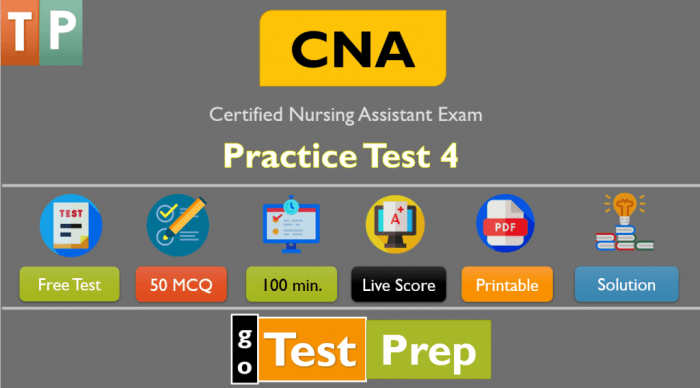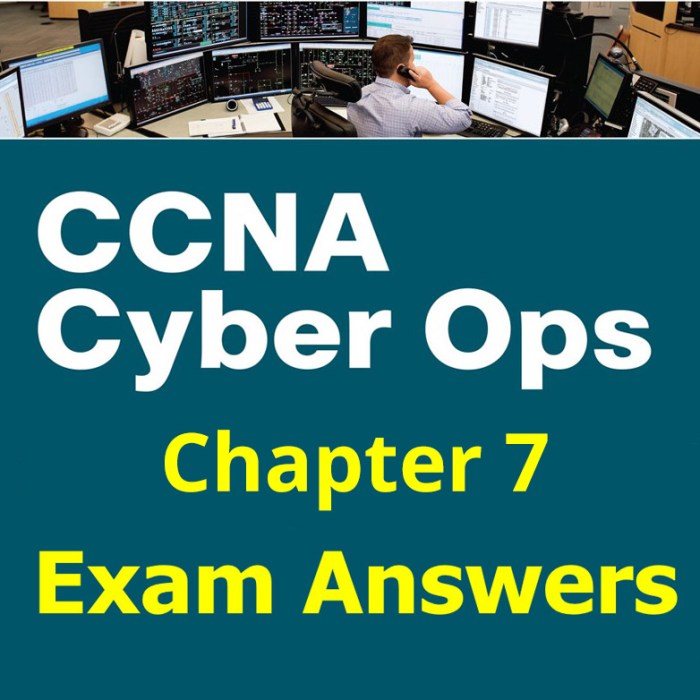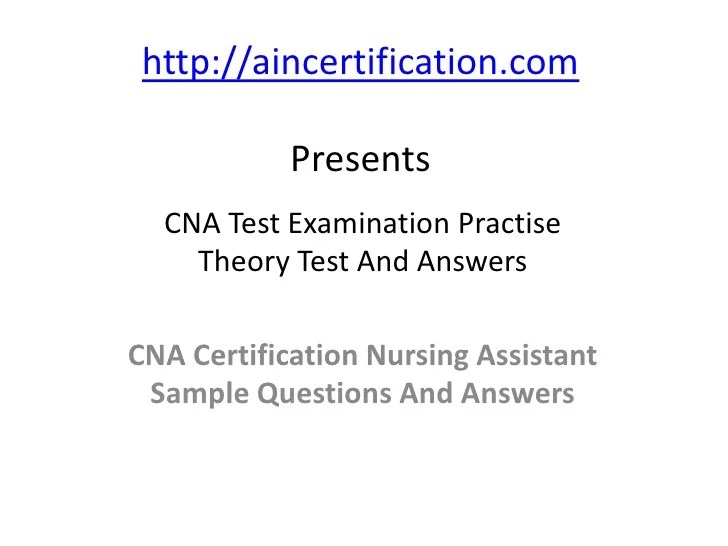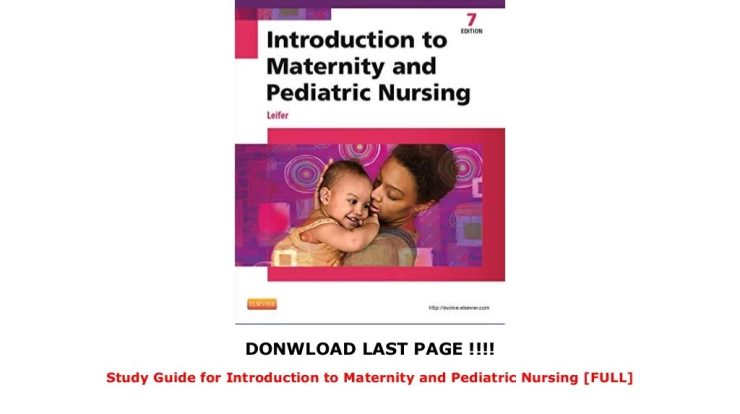Cna chapter 7 exam answers – Get ready to conquer the CNA Chapter 7 exam with our exclusive guide! We’ve meticulously compiled the answers you need to ace this crucial assessment, providing a comprehensive overview of vital concepts and practical skills.
From patient assessment and vital signs to medical asepsis and patient positioning, we’ll cover everything you need to know to demonstrate your competency and provide exceptional patient care.
Introduction to CNA Chapter 7 Exam

The CNA Chapter 7 exam assesses your knowledge and skills in providing care to individuals with dementia and Alzheimer’s disease. It covers topics such as understanding dementia, providing person-centered care, managing behavioral challenges, and promoting safety and well-being.
For those preparing for the CNA Chapter 7 exam, accessing reliable study materials is crucial. Consider utilizing the comprehensive Mark Klimek 15 Page Notes as a valuable resource. These notes provide concise summaries, practice questions, and essential concepts to help you excel in your exam preparation.
Supplementing your studies with this resource can significantly enhance your understanding of the exam topics and increase your confidence on test day.
The exam consists of multiple-choice questions, fill-in-the-blank questions, and case studies. You will have a limited amount of time to complete the exam, so it is important to be prepared.
Understanding Dementia
- Definition and types of dementia
- Causes and risk factors
- Stages and symptoms of dementia
- Impact of dementia on individuals and families
Assessment of the Patient
Patient assessment is crucial in healthcare as it provides a comprehensive understanding of the patient’s current health status and identifies potential health concerns. It enables healthcare professionals to develop personalized care plans and interventions tailored to the individual’s specific needs.
Steps Involved in Conducting a Head-to-Toe Assessment
A head-to-toe assessment involves a systematic examination of the patient from head to toe, covering various body systems and areas. The steps involved include:
- Inspection: Observing the patient’s general appearance, posture, skin condition, and any visible abnormalities.
- Palpation: Using hands to gently feel the patient’s skin, lymph nodes, and other structures for abnormalities such as lumps, tenderness, or temperature changes.
- Percussion: Tapping on the patient’s body to assess underlying structures and sounds, such as lung sounds or abdominal tenderness.
- Auscultation: Listening to sounds within the body using a stethoscope, such as heart sounds, lung sounds, or bowel sounds.
Common Assessment Findings and Their Implications
During a patient assessment, healthcare professionals may encounter various common findings that can indicate potential health concerns. These findings include:
- Abnormal vital signs (e.g., elevated blood pressure, low oxygen saturation)
- Skin rashes or lesions
- Swelling or edema
- Pain or discomfort
- Changes in mental status or behavior
These findings should be interpreted in the context of the patient’s overall health history and current symptoms to determine the appropriate course of action, such as further diagnostic tests, medication administration, or referral to a specialist.
Vital Signs
Vital signs are a set of physiological measurements that reflect the body’s overall health and well-being. They provide valuable information about the functioning of the circulatory, respiratory, and nervous systems, and can help healthcare professionals detect and monitor various health conditions.
Methods for Measuring and Recording Vital Signs
Vital signs are typically measured and recorded using various devices and techniques. These include:
- Thermometer:Measures body temperature.
- Sphygmomanometer:Measures blood pressure.
- Stethoscope:Listens to heart and lung sounds.
- Pulse oximeter:Measures blood oxygen saturation.
Normal Ranges for Vital Signs and Deviations from the Norm
Vital signs have normal ranges that vary slightly depending on age, sex, and other factors. Deviations from these normal ranges can indicate potential health issues and require further assessment.
| Vital Sign | Normal Range |
|---|---|
| Body Temperature | 97.6°F
|
| Blood Pressure | 120/80 mmHg |
| Heart Rate | 60-100 beats per minute |
| Respiratory Rate | 12-20 breaths per minute |
| Blood Oxygen Saturation | 95-100% |
Medical Asepsis

Medical asepsis refers to the practices and procedures employed to prevent the spread of microorganisms and infection in healthcare settings. It involves maintaining a sterile environment and minimizing the risk of contamination.
The principles of medical asepsis include:
- Using sterile techniques when performing invasive procedures.
- Maintaining a clean and disinfected environment.
- Practicing proper hand hygiene.
- Using personal protective equipment (PPE) when necessary.
Techniques for Maintaining a Sterile Environment
Maintaining a sterile environment involves several techniques, such as:
- Sterilization: Using heat, chemicals, or radiation to eliminate all microorganisms from an object or surface.
- Disinfection: Reducing the number of microorganisms on an object or surface to a safe level.
- Isolation: Separating infected individuals from non-infected individuals to prevent the spread of infection.
- Quarantine: Restricting the movement of individuals who have been exposed to an infectious disease to prevent its spread.
Importance of Hand Hygiene and Its Role in Infection Control
Hand hygiene is one of the most important practices in medical asepsis. It involves washing hands with soap and water or using an alcohol-based hand sanitizer to remove microorganisms and prevent their transmission.
Hand hygiene plays a crucial role in infection control by:
- Preventing the spread of microorganisms from one patient to another.
- Preventing the spread of microorganisms from healthcare workers to patients.
- Preventing the spread of microorganisms from patients to healthcare workers.
Patient Positioning
![]()
Proper patient positioning is crucial for comfort, safety, and effective medical care. It involves placing the patient in a specific position that facilitates medical procedures, promotes healing, or prevents complications. Understanding the different patient positions and their indications, as well as adhering to principles of proper body mechanics, is essential for CNAs.
Principles of Proper Body Mechanics
When positioning patients, it is important to follow principles of proper body mechanics to protect both the patient and the caregiver from injury. These principles include:
- Maintaining a neutral spine and avoiding twisting or bending motions.
- Keeping objects close to the body and lifting with the legs, not the back.
- Using assistive devices such as gait belts or slide boards when necessary.
Patient Positions
Common patient positions include:
- Supine position:Patient lying on their back with legs extended.
- Prone position:Patient lying on their stomach with arms at their sides.
- Lateral position:Patient lying on their side with legs flexed and arms bent.
- Fowler’s position:Patient sitting up in bed with head and shoulders elevated.
- Sims’ position:Patient lying on their side with top leg flexed and bottom leg extended.
Each position has specific indications, such as:
- Supine position: For examinations, procedures, or recovery from anesthesia.
- Prone position: For rectal or spinal procedures.
- Lateral position: For patients with respiratory distress or those who need suctioning.
- Fowler’s position: For patients with heart or lung conditions.
- Sims’ position: For patients with hip or knee injuries.
Assistive Devices for Patient Positioning
Assistive devices can help CNAs position patients safely and efficiently. These devices include:
- Gait belts:Used to support patients when walking or transferring.
- Slide boards:Used to transfer patients from one surface to another.
- Hoyer lifts:Mechanical devices used to lift and move patients who are unable to stand or walk.
Range of Motion Exercises: Cna Chapter 7 Exam Answers
Range of motion (ROM) exercises involve moving a joint through its full range of motion. These exercises help maintain joint flexibility, prevent stiffness, and improve overall mobility. ROM exercises can be performed actively, where the patient moves the joint on their own, or passively, where a caregiver moves the joint for them.
Types of Range of Motion Exercises
ROM exercises can be classified into three types:
- Active range of motion (AROM):The patient performs the movement on their own.
- Passive range of motion (PROM):A caregiver moves the patient’s joint through its range of motion.
- Assisted range of motion (AROM):The patient and caregiver work together to move the joint.
Performing Range of Motion Exercises
When performing ROM exercises, it’s important to follow these guidelines:
- Start slowly and gradually increase the range of motion.
- Do not force the joint beyond its natural range of motion.
- Move the joint smoothly and avoid jerking.
- Hold each position for a few seconds before moving to the next.
- Repeat the exercises several times.
ROM exercises should be performed regularly to maintain joint health and mobility. They are especially important for individuals who are recovering from injuries or surgeries, or who have conditions that limit their movement.
Transferring Patients

Transferring patients is a common task for CNAs. It is important to be able to transfer patients safely and comfortably to prevent injury to the patient or yourself. There are many different methods of transferring patients, and the best method will depend on the patient’s condition and the environment.
Principles of Safe Patient Transfer
There are some general principles that apply to all patient transfers. These principles include:
- Always assess the patient’s condition before transferring them.
- Use proper body mechanics to protect your own back.
- Get help from another person if the patient is heavy or unstable.
- Use assistive devices, such as a Hoyer lift, if necessary.
- Make sure the patient is comfortable and secure before leaving them.
Methods of Transferring Patients
There are many different methods of transferring patients. The most common methods include:
- One-person assist
- Two-person assist
- Hoyer lift
- Slide board
- Transfer belt
The method of transfer that you choose will depend on the patient’s condition and the environment. For example, a one-person assist may be appropriate for a patient who is able to walk with assistance, while a Hoyer lift may be necessary for a patient who is unable to bear weight.
Assistive Devices for Patient Transfers
There are a variety of assistive devices that can be used to make patient transfers easier and safer. These devices include:
- Hoyer lift
- Slide board
- Transfer belt
- Gait belt
- Wheelchair
The type of assistive device that you use will depend on the patient’s condition and the environment. For example, a Hoyer lift may be necessary for a patient who is unable to bear weight, while a gait belt may be appropriate for a patient who is able to walk with assistance.
Dressing Changes

Dressing changes are an essential part of wound care. They help to keep the wound clean and protected, and they can promote healing. The steps involved in performing a dressing change are as follows:
- Gather your supplies. You will need sterile gloves, gauze pads, tape, and a dressing.
- Wash your hands thoroughly with soap and water.
- Put on sterile gloves.
- Remove the old dressing. Be careful not to pull on the wound.
- Clean the wound with sterile gauze pads. Start at the center of the wound and work your way out.
- Apply a new dressing to the wound. The type of dressing you use will depend on the type of wound.
- Secure the dressing with tape.
- Dispose of the old dressing and gloves in a biohazard bag.
There are many different types of dressings available. The type of dressing you use will depend on the type of wound. Some common types of dressings include:
- Gauze padsare used to absorb drainage from the wound.
- Hydrocolloid dressingsare used to create a moist environment that promotes healing.
- Foam dressingsare used to absorb drainage and protect the wound from pressure.
- Transparent dressingsare used to allow you to see the wound without removing the dressing.
It is important to follow the principles of wound care and infection prevention when performing a dressing change. These principles include:
- Keep the wound clean.This will help to prevent infection.
- Protect the wound from further injury.This will help to promote healing.
- Promote healing.This can be done by using the right type of dressing and by keeping the wound moist.
By following these principles, you can help to ensure that your patient’s wound heals quickly and without complications.
Suctioning

Suctioning is a procedure that removes mucus, secretions, or other fluids from the airway. It is often used to clear the airway of obstructions, such as mucus or blood, and to help patients breathe more easily.
There are two main types of suctioning devices: mechanical and manual. Mechanical suctioning devices use a vacuum to create suction, while manual suctioning devices use a hand-operated pump to create suction.
Nasopharyngeal Suctioning, Cna chapter 7 exam answers
Nasopharyngeal suctioning is a procedure that removes mucus and secretions from the nasopharynx, which is the area at the back of the throat. This procedure is often used to clear the airway of obstructions, such as mucus or blood, and to help patients breathe more easily.
- Gather your supplies, including a suction machine, suction tubing, a Yankauer suction tip, and a sterile glove.
- Position the patient in a semi-Fowler’s position.
- Put on a sterile glove.
- Insert the Yankauer suction tip into the patient’s nostril.
- Turn on the suction machine and apply suction to the Yankauer suction tip.
- Gently suction the mucus and secretions from the nasopharynx.
- Turn off the suction machine and remove the Yankauer suction tip from the patient’s nostril.
- Dispose of the used supplies in a biohazard container.
Tracheal Suctioning
Tracheal suctioning is a procedure that removes mucus and secretions from the trachea, which is the windpipe. This procedure is often used to clear the airway of obstructions, such as mucus or blood, and to help patients breathe more easily.
- Gather your supplies, including a suction machine, suction tubing, a sterile tracheal suction catheter, and a sterile glove.
- Position the patient in a semi-Fowler’s position.
- Put on a sterile glove.
- Insert the tracheal suction catheter into the patient’s trachea.
- Turn on the suction machine and apply suction to the tracheal suction catheter.
- Gently suction the mucus and secretions from the trachea.
- Turn off the suction machine and remove the tracheal suction catheter from the patient’s trachea.
- Dispose of the used supplies in a biohazard container.
CPR and AED
Cardiopulmonary resuscitation (CPR) and automated external defibrillator (AED) are life-saving techniques that can help victims of sudden cardiac arrest. CPR provides chest compressions and rescue breaths to maintain blood flow and oxygenation to the brain and other vital organs. An AED is a portable device that delivers an electrical shock to the heart to restore a normal heart rhythm.
Steps Involved in Performing CPR
- Check for responsiveness: Tap the person’s shoulder and shout, “Are you okay?”
- Call for emergency medical services (EMS): If the person does not respond, call 911 or your local emergency number.
- Position the person: Lay the person on their back on a firm, flat surface.
- Open the airway: Tilt the person’s head back slightly and lift their chin to open their airway.
- Check for breathing: Look, listen, and feel for breathing for up to 10 seconds.
- Start chest compressions: If the person is not breathing, place the heel of one hand on the center of the person’s chest and the heel of your other hand on top of the first hand. Push down hard and fast at a rate of 100-120 compressions per minute.
- Give rescue breaths: After 30 chest compressions, open the person’s airway again and give two rescue breaths. Each breath should last about 1 second.
- Continue CPR: Continue alternating between 30 chest compressions and 2 rescue breaths until EMS arrives or the person starts breathing on their own.
Use of an Automated External Defibrillator (AED)
- Turn on the AED: Open the lid of the AED and turn it on.
- Apply the pads: Remove the person’s clothing from their chest and apply the AED pads to the person’s bare skin. One pad should be placed on the upper right side of the chest and the other pad should be placed on the lower left side of the chest.
- Analyze the heart rhythm: The AED will analyze the person’s heart rhythm and determine if a shock is needed.
- Deliver the shock: If a shock is needed, the AED will instruct you to stand clear and press the shock button. Do not touch the person while the shock is being delivered.
- Continue CPR: After the shock is delivered, continue CPR until EMS arrives or the person starts breathing on their own.
Importance of CPR and AED Training
CPR and AED training is essential for anyone who wants to be prepared to save a life. CPR and AEDs are simple to use, and even a few minutes of training can make a big difference in an emergency.
FAQ Guide
What is the significance of patient assessment in CNA practice?
Patient assessment is crucial for gathering essential information about a patient’s health status, identifying potential problems, and developing appropriate interventions to ensure their well-being.
How do I measure and record vital signs accurately?
To ensure accuracy, follow proper techniques for measuring vital signs, including using calibrated equipment and recording measurements promptly and clearly.
What are the key principles of medical asepsis?
Medical asepsis involves maintaining a sterile environment to prevent the spread of infection. It includes practices like hand hygiene, proper disposal of contaminated materials, and maintaining a clean work area.
